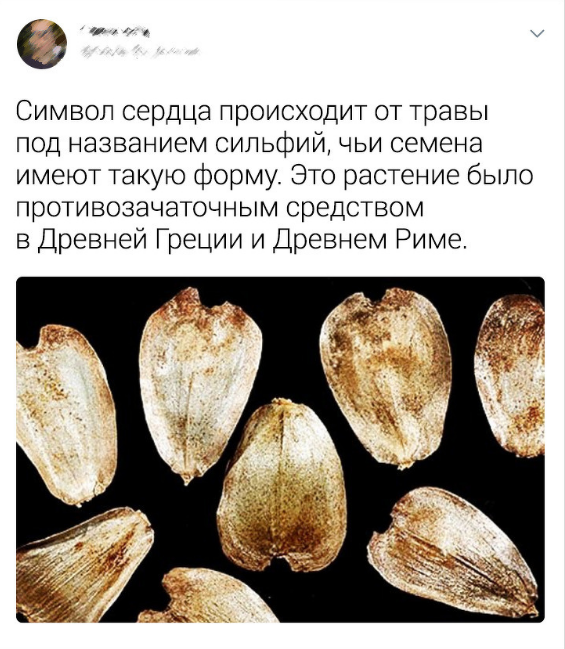 Good day, friends!February 14 is Valentine's Day or Valentine's Day in the yard.Everyone knows about it (what, someone does not know?).However, not everyone knows (I believe there are not many of them in Habré) that on February 14, 1946, the first really working electronic computer ENIAC I (Electrical Numerical Integrator And Calculator) was demonstrated to the scientific world and everyone interested, therefore February 14 is also Computer Day.Love is a wonderful feeling. As Hemingway said, if two love each other, this cannot end well. Just a joke, pals.JavaScript programming is also a cool thing.What first comes to mind when you say “love”? Of course, the heart. How to make a heart on JS? Of course using canvas. By the way, mentioning the canvas as HTML5 Canvas always amused me, because from html there is only a tag (element, if you like), the rest is JS, and when it comes to more or less serious (interesting) projects, far from simple JS.
Good day, friends!February 14 is Valentine's Day or Valentine's Day in the yard.Everyone knows about it (what, someone does not know?).However, not everyone knows (I believe there are not many of them in Habré) that on February 14, 1946, the first really working electronic computer ENIAC I (Electrical Numerical Integrator And Calculator) was demonstrated to the scientific world and everyone interested, therefore February 14 is also Computer Day.Love is a wonderful feeling. As Hemingway said, if two love each other, this cannot end well. Just a joke, pals.JavaScript programming is also a cool thing.What first comes to mind when you say “love”? Of course, the heart. How to make a heart on JS? Of course using canvas. By the way, mentioning the canvas as HTML5 Canvas always amused me, because from html there is only a tag (element, if you like), the rest is JS, and when it comes to more or less serious (interesting) projects, far from simple JS. I have one curious heart in the bins. And today I decided to share it with you.The code is not mine, here is its author . And here is an article with the details.So let's go.Markup and styles:
I have one curious heart in the bins. And today I decided to share it with you.The code is not mine, here is its author . And here is an article with the details.So let's go.Markup and styles:<body style="margin: 0; display: flex;">
<canvas></canvas>
</body>
Yes, that's all the markup and styles. LolJS looks much more serious:let c = document.querySelector('canvas'),
$ = c.getContext('2d'),
w = c.width = innerWidth,
h = c.height = innerHeight,
random = Math.random
$.fillStyle = 'black'
$.fillRect(0, 0, w, h)
let heartPos = function (rad) {
return [Math.pow(Math.sin(rad), 3), -(15 * Math.cos(rad) - 5 * Math.cos(2 * rad) - 2 * Math.cos(3 * rad) - Math.cos(4 * rad))]
}
let scaleAndTranslate = function (pos, sx, sy, dx, dy) {
return [dx + pos[0] * sx, dy + pos[1] * sy]
}
window.addEventListener('resize', function () {
w = c.width = innerWidth
h = c.height = innerHeight
$.fillStyle = 'black'
$.fillRect(0, 0, w, h)
})
let traceCount = 50,
pointsOrigin = [],
dr = .1,
i
for (i = 0; i < Math.PI * 2; i += dr)
pointsOrigin.push(scaleAndTranslate(heartPos(i), 210, 13, 0, 0))
for (i = 0; i < Math.PI * 2; i += dr)
pointsOrigin.push(scaleAndTranslate(heartPos(i), 150, 9, 0, 0))
for (i = 0; i < Math.PI * 2; i += dr)
pointsOrigin.push(scaleAndTranslate(heartPos(i), 90, 5, 0, 0))
let heartPointsCount = pointsOrigin.length,
targetPoints = []
let pulse = function (kx, ky) {
for (i = 0; i < pointsOrigin.length; i++) {
targetPoints[i] = []
targetPoints[i][0] = kx * pointsOrigin[i][0] + w / 2
targetPoints[i][1] = ky * pointsOrigin[i][1] + h / 2
}
}
let e = []
for (i = 0; i < heartPointsCount; i++) {
let x = random() * w
let y = random() * h
e[i] = {
vx: 0,
vy: 0,
R: 2,
speed: random() + 5,
q: ~~(random() * heartPointsCount),
D: 2 * (i % 2) - 1,
force: .2 * random() + .7,
f: 'hsla(0,' + ~~(40 * random() + 60) + '%,' + ~~(60 * random() + 20) + '%,.3)',
trace: []
}
for (let k = 0; k < traceCount; k++) e[i].trace[k] = {
x: x,
y: y
}
}
let config = {
traceK: .4,
timeDelta: .01
}
let time = 0
let loop = function () {
let n = -Math.cos(time)
pulse((1 + n) * .5, (1 + n) * .5)
time += ((Math.sin(time)) < 0 ? 9 : (n > .8) ? .2 : 1) * config.timeDelta
$.fillStyle = 'rgba(0,0,0,.1)'
$.fillRect(0, 0, w, h)
for (i = e.length; i--;) {
let u = e[i],
q = targetPoints[u.q],
dx = u.trace[0].x - q[0],
dy = u.trace[1].y - q[1],
length = Math.sqrt(dx * dx + dy * dy)
if (10 > length) {
if (.95 < random()) {
u.q = ~~(random() * heartPointsCount)
} else {
if (.99 < random()) {
u.D *= -1
}
u.q += u.D
u.q %= heartPointsCount
if (0 > u.q) {
u.q += heartPointsCount
}
}
}
u.vx += -dx / length * u.speed
u.vy += -dy / length * u.speed
u.trace[0].x += u.vx
u.trace[0].y += u.vy
u.vx *= u.force
u.vy *= u.force
for (k = 0; k < u.trace.length - 1;) {
let T = u.trace[k]
let N = u.trace[++k]
N.x -= config.traceK * (N.x - T.x)
N.y -= config.traceK * (N.y - T.y)
}
$.fillStyle = u.f
for (k = 0; k < u.trace.length; k++) {
$.fillRect(u.trace[k].x, u.trace[k].y, 1, 1)
}
}
requestAnimationFrame(loop, c)
}
loop()
The sole purpose of this article is to entertain you a little on holiday (especially since today is Friday).My version can be seen here .For me personally, this code is yet another proof of the almost limitless possibilities of the canvas-JavaScript tandem.Thank you for attention. Good weekend.